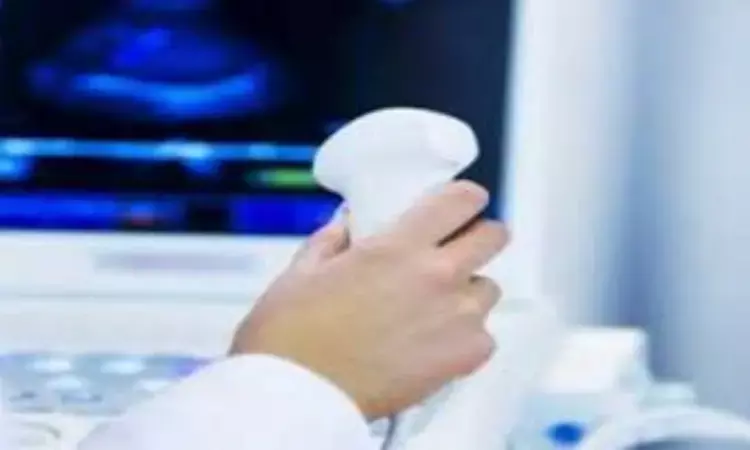- Home
- Medical news & Guidelines
- Anesthesiology
- Cardiology and CTVS
- Critical Care
- Dentistry
- Dermatology
- Diabetes and Endocrinology
- ENT
- Gastroenterology
- Medicine
- Nephrology
- Neurology
- Obstretics-Gynaecology
- Oncology
- Ophthalmology
- Orthopaedics
- Pediatrics-Neonatology
- Psychiatry
- Pulmonology
- Radiology
- Surgery
- Urology
- Laboratory Medicine
- Diet
- Nursing
- Paramedical
- Physiotherapy
- Health news
- Fact Check
- Bone Health Fact Check
- Brain Health Fact Check
- Cancer Related Fact Check
- Child Care Fact Check
- Dental and oral health fact check
- Diabetes and metabolic health fact check
- Diet and Nutrition Fact Check
- Eye and ENT Care Fact Check
- Fitness fact check
- Gut health fact check
- Heart health fact check
- Kidney health fact check
- Medical education fact check
- Men's health fact check
- Respiratory fact check
- Skin and hair care fact check
- Vaccine and Immunization fact check
- Women's health fact check
- AYUSH
- State News
- Andaman and Nicobar Islands
- Andhra Pradesh
- Arunachal Pradesh
- Assam
- Bihar
- Chandigarh
- Chattisgarh
- Dadra and Nagar Haveli
- Daman and Diu
- Delhi
- Goa
- Gujarat
- Haryana
- Himachal Pradesh
- Jammu & Kashmir
- Jharkhand
- Karnataka
- Kerala
- Ladakh
- Lakshadweep
- Madhya Pradesh
- Maharashtra
- Manipur
- Meghalaya
- Mizoram
- Nagaland
- Odisha
- Puducherry
- Punjab
- Rajasthan
- Sikkim
- Tamil Nadu
- Telangana
- Tripura
- Uttar Pradesh
- Uttrakhand
- West Bengal
- Medical Education
- Industry
2 mm size change on screening gallbladder polyps as basis of cholecystectomy too conservative: Study

Leesburg, VA -Recent European multisociety guidelines recommend routine follow-up imaging of gallbladder polyps (including polyps <6 mm in patients without risk factors) and size change of ≥2 mm to prompt cholecystectomy.
Researchers have found in a new study that Gallbladder polyps fluctuate in size, number, and visibility over serial examinations. Using 2 mm threshold for growth, 10% increased in size but no carcinoma was identified.
Therefore surveillance and serial ultrasound examinations of essentially all polyps and a 2 mm size change as basis for cholecystectomy are likely too conservative for clinical application.
The researchers conducted a study to assess longitudinal changes in the number and size of gallbladder polyps on serial ultrasound examinations.
The retrospective study included patients who underwent at least one screening ultrasound examination between January 2010 and December 2020 as part of a hepatocellular carcinoma screening and surveillance program that demonstrated a gallbladder polyp. Number of polyps and size of largest polyp were recorded based primarily on review of examination reports. Longitudinal changes on serial examinations were summarized. Pathologic findings from cholecystectomy were reviewed
"To our knowledge," wrote corresponding author Aya Kamaya of Stanford Hospital and Clinics in California, "our study is the first conducted in the United States to longitudinally evaluate gallbladder polyps exclusively in patients with underlying liver disease."
Kamaya and colleagues' retrospective study included patients who underwent at least one screening ultrasound examination between January 2010 and December 2020, as part of a hepatocellular carcinoma (HCC) screening and surveillance program that demonstrated a gallbladder polyp.
This retrospective study included patients who underwent at least one screening ultrasound examination between January 2010 and December 2020 as part of a hepatocellular carcinoma screening and surveillance program that demonstrated a gallbladder polyp. Number of polyps and size of largest polyp were recorded based primarily on review of examination reports. Longitudinal changes on serial examinations were summarized. Pathologic findings from cholecystectomy were reviewed.
Acknowledging that gallbladder polyps can fluctuate in both size and number over serial examinations, and may even fluctuate in visibility, "using a 2 mm threshold for growth," the authors of this AJR article concluded, "10% increased in size."
Hina Zahid Joined Medical Dialogue in 2017 with a passion to work as a Reporter. She coordinates with various national and international journals and association and covers all the stories related to Medical guidelines, Medical Journals, rare medical surgeries as well as all the updates in the medical field. Email: editorial@medicaldialogues.in. Contact no. 011-43720751
Dr Kamal Kant Kohli-MBBS, DTCD- a chest specialist with more than 30 years of practice and a flair for writing clinical articles, Dr Kamal Kant Kohli joined Medical Dialogues as a Chief Editor of Medical News. Besides writing articles, as an editor, he proofreads and verifies all the medical content published on Medical Dialogues including those coming from journals, studies,medical conferences,guidelines etc. Email: drkohli@medicaldialogues.in. Contact no. 011-43720751


